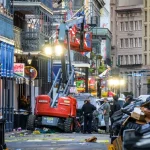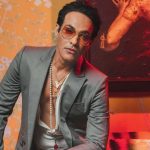Film Music: Reinvention of the Classical
Cultural power play and the changing aesthetics of film music
 TM Krishna
TM Krishna
 TM Krishna
TM Krishna
 |
06 Apr, 2016
|
06 Apr, 2016
/wp-content/uploads/2016/04/classical1.jpg)
REMINISCING AND NOSTALGIA appear to be activities of the mind that consciously delve into the past, removing us momentarily from the reality that surrounds us. But the past is never really behind us; it is alive and an active participant in our present, moving and shaping human thought and action. This is true of every sphere of life, be it the high-tech binary-digital universe or the landscape of tones and tunes that music creates. More often than not, we come to the conclusion that something precious that ‘was’ has been lost, purity and honesty have been bartered for something that is not of the same quality, calibre and value. This is a complex perception dyed in numerous shades of emotion that colour our lenses.
Let us explore this past-present asymmetry within the world of Indian film music.
It is difficult to make generalisations based on the likes and dislikes of diverse people of different generations belonging to varied cultural and social backgrounds. Yet, it is not hard to pick up trends in perception, overall acceptance, dominant opinions and moments of inflection that guide film music lovers. These seem to transcend individual preferences and choices, going beyond what X likes or Y dislikes. What factors influence the choices X and Y make over a period of time? Why are certain songs treasured and valued more than others? Are these reflections of only musical quality or are there many more layers to it? What are we holding on to? From the past to the present, are there certain constants that go unnoticed? Is the idea of beautiful film music being ‘mainstreamed’ or masterminded? Who holds the cards? Is there an underbelly, not entirely soft, to these aesthetic choices? These questions need to be explored, not to undermine the greatness of any of the legendary music directors, but to reflect on ideas of beauty that dominate societal consciousness. And soon, we may find the past and present merging into a commonality.
There is a strong belief, to which I wholly subscribe, that technological intervention in the sphere of composing has affected the nature of music. Those who counter-argue this view maintain that technology has enriched and ‘made’ music, but nevertheless, let me state my concerns. Every musical instrument is a creation of technology and it is only in the materials used and techniques employed that the technological aiding of music differs from generation to generation. So we are not talking about something new when we talk of ‘technology and music’. But there is something new that’s happening which makes today’s situation worrisome. And that is the abdication of the musical mind to the machine. Now it is not technology to the aid of music, but music at the service of the machine. And this marks a paradigm shift in the role of a music composer. The composer today has become more of an arranger, a choice maker, a compiler. This does need a different set of skills and the final decision is still human. But the power of the machine now has a disturbing effect on the creative process.
MUSIC CREATION seems to be losing an inner spark. The composer, in gaining technological mastery, is losing musical relevance. What we may find interesting as we go along in this investigation is that even this shift has not really changed our impressions of lasting film music.
The sound of Ilayaraja’s music has played a major role in erasing his caste identity from social consciousness
A common lament among film music lovers, irrespective of whether they are part of the Bollywood, Kollywood or Tollywood fraternities, is the accusation that movies of the past had far better melodies that, unlike music of recent times, remain etched in our mindscape. There is a general feeling that older film music had permanence, honesty, effort, nuance and intensity, something that is rarely found today. And naturally, the lyrics of the past are considered more poetic and meaningful. The most interesting aspect of this perception is that every generation has its own sense of ‘old’ that it holds on to. That becomes their baseline for comparison. Therefore, while for some it would be Naushad’s and C Ramachandra’s compositions, others would swear by Laxmikant-Pyarelal, and for the people of the early 90s, Nadeem-Shravan could be the standard. Yet, all of them will make similar accusations.
Let us break this idea down further. There is, in this feeling, a romanticisation of the past that we cannot run away from. Life experiences from our teens and early twenties are the most treasured. They belong to the time we came into our own, the freshness of life overwhelmed our senses, and consequently every such ‘old’ encounter remains tender. It is most likely that the music that we hold close to our hearts comes from that period in our lives when we were either exploring free spirits or were closet rebels, and what we seek today is a reminder of that fragrance or a reflection of that scene. Therefore, when some songs allow us to access those far reaches of our memory, we hear in that great music our equivalence with the past. Disappointment comes when there is a complete disconnect. The youth of today are like the ‘us’ of the past and find their special songs from what is on offer. Sometimes the baseline reference may not be music produced during our teen years, but what we were exposed to during that period.
Given the way each generation slides back in relatedness to ‘older’ film music, is there something that connects the old, the middle-aged and the young at any given time? Beyond the momentary enjoyment that many songs provide us, if we were to ask people of various generations to name songs they call ‘classics’, we may notice two streams. We will find that they either sonically shadow the classical or semi-classical or reflect the Western or modern sounds of their times. The classical and its nearby musical forms have a connected sound that is undeniable, and irrespective of the music director, singer or instruments employed, the link is obvious. Hindustani, Carnatic and Sufi music are in this category, as also qawwaalis and bhajans. Whenever we hear the word ‘melody’ in the cinema context, we can be rest assured that the song has a Ghazal or classical flavour.
The Western has always been a symbol of modernity and contemporariness. This is why RD Burman attracted the youth
On the other side, we have the collective of the Western popular. Depending on the kind of Western music that dominates our ears at a certain period of time, that becomes the ‘what’s in’ coefficient. Thus, from disco to hip-hop and EDM, the West remains a strong channel of musical consciousness. The fusing of these two threads, sometimes overlaid with Western classical, is also a common phenomenon. What I find intriguing is the fact that songs that transcend generations usually tend to lean towards one of these sound-blocks. These songs will be often recalled as the best of their generation, those that film music aficionados would like to hear again and again.
In every film generation, the classical itself is reinvented. When Indian film music first came into existence, it was as close to the ‘real classical’ as it could be. This is as true of Hindi film music as it is of Tamil films. There was a time in the 40s and the early 50s when songs such as Amba manam in raaga Kamavardhini and Ellam inba mayam in a medley of Carnatic raagas were mega-hits. But over a period of time, a filmy-classical style has evolved. This has travelled far away from its ‘origins’ but retains sounds that give it a classical touch. So for some Tamil movie-goers, great music refers to the songs that were ‘pure’ when Papanasam Sivan and SV Venkatraman ruled; for others it could be the era of G Ramanathan and songs such as Endru taniyum or the sentimental creations of the duo Vishwanathan-Ramamurthy such as Ponnai Virubum Bhoomiyile; for some others Ilayaraja sums it up with his classical re-inventions in film hits such as Andhi Mazhai. And for the next generation, it is AR Rahman’s lilting melodies that retain a semi-classical, Sufi and Hindustani feel. The Western has always been a symbol of modernity and contemporariness and is therefore naturally embraced by the youth of each era. This is why RD Burman’s Aaja Aaja from Teesri Manzil attracted the youth of his time, just as much as Vishal-Shekhar’s Tu Meri from Bang Bang! offers musical modernity today.
We cannot miss in this observation the obvious caste- and class-related sounds that permeate musical judgement. Both the classical and the Western are built on habituations of the elite and therefore there is much more than music taste that nudges us into making these choices. It does seem likely that film songs that are remembered by listeners and critics are more often than not aligned with the tastes of the upper classes. Of course, the idea of the upper class cannot be detached from traditional caste formations, and therefore, upper-caste cultures permeate the class. It is also true that social aspiration is closely linked to socio-cultural behaviour and those who seek to become the elite tend to unconsciously re-configure their preferences. Built into this is also the musical pressure that the ‘urban’ exerts on the rural. There is a broad homogeneity that governs what we consider great film music and this seems more driven by society’s cultural hierarchy rather than purely the musical.
For the next generation, it is AR Rahman’s lilting melodies that retain a semi-classical, Sufi and Hindustani feel
AS SOCIETIES, WE HAVE spread the unwarranted notion that classical is the most sophisticated and complex form, and so its mastery makes for respectability. Similarly, the popular Western is seen as ‘cool’. When the influence of the West increased on Indian film music, its close link with classical sources diminished, but the connection has never ceased. As a consequence of which, both these remain powerful aesthetic influencers of film music. It is in combining both these factors that music directors have created unforgettable numbers.
What about the music composer? Let us take the case of the musical genius Ilayaraja. Recently, on an online discussion forum, I came across this strong argument that Ilayaraja had culturally disowned his Dalit roots. His music, the claim went, was Sanskritised and catered to privileged sensibilities: an interesting thought that couldn’t be easily dismissed. We do remember Ilayaraja as the one who bridged the folk, the Indian classical and the Western classical divide. Yet, it is in his use of Carnatic raagas and complex Western-based harmonies that he made a mark. Even to the non-technical listener, these sounds are unmistakably evident. Without taking anything away from the sheer magnificence of his creations, it is this combination of classicals that assured Ilayaraja artistic reverence. There is no doubt that what he created was an astounding aesthetic feat, but it is also true that he created a sound that the middle-upper classes could connect with. And for the others, it was the sound of aspiration. Even his folk became layered with Western or Carnatic possibilities. Let us not forget that the idea of folk music in Indian cinema has largely been curated to suit upper class ears. The difficult question that does not have an answer is whether Ilayaraja would have been recognised as he is today if his sounds had remained subaltern. I do think that the sound of Ilayaraja’s music has played a major role in erasing his caste identity from social consciousness.
You can argue that I am only viewing this from the urban middle-class point of view. And that would be an accurate counterpoint. It is possible that people from less privileged sections of society who are untouched by these cultural aspirations or are extremely proud of who they are will give us a different set of all-time great songs. But let us be honest: are their voices heard? Like in the battle for societal space, here too, their serious choices mean very little to the mainstream. People from the substratum are needed for the film song hit-parade, but their critical appraisal is irrelevant. Songs that have the flavour of their culture will feature only when the film allows for such a context, otherwise they are not necessary, but this is not true of the popular-Western or the classical. Even worse is the fact that most of the time, it is the item number that musically echoes the subaltern sound, further polarising musical understanding.
People beyond the middle-upper classes also do not have access to opinion makers and music critics, and are not considered serious listeners. Even though Tamil cinema went through socio-political transformations, the classicists and modernists are still dictating its sound. The timeline has shifted many times over, but the basic premise has not. This makes Kolaveri an interesting case study. This was a song I initially utterly disliked and even today find unmusical. But it symbolises through its lyrics, delivery and visualisation the desires of the lower castes and classes and therefore is an interesting inflection point. But will Kolaveri be part of any of our all-time film songs list? That is doubtful. A song going viral does not ensure its timelessness. It is, as its very name implies, a three- or five-day affair. It is also possible that many who love Kolaveri will think twice before adding it to their ‘great’ list, since these songs do not make the ‘classy’ cut. Whereas we may well include a mediocre classical- sounding song. It is also true that the section of the population that will probably for certain have Kolaveri on their list will never be asked their all-time favourites.
Comparing film music of different times is an important exercise that is needed to understand aesthetic movements and to critique contemporary practice. I am not arguing that it is impossible to review film music since it is inherently casteist.
As a musician, I am extremely uncomfortable with the direction film music has taken today. But when I think about film music of the past and the present, there is sameness in our choices when it comes to selecting significant music of different time periods. This similarity reflects a socio-aesthetic conditioning which people with cultural power need to be aware of. Musical selections are clearly not just personal. Built into them are who we are, where we live and what we listen to. That makes it imperative that we reflect on our idea of beauty, especially when we cut across time. We have to go beyond the limitations that society embeds into our consciousness and receive music with greater freedom and reduce aesthetic dominance.

/wp-content/uploads/2025/01/Cover-Forecast2025.jpg)













More Columns
The Lone Wolf Terrorist Madhavankutty Pillai
Shadow Warrior Rajeev Srinivasan
Mozez Singh’s Triumph Kaveree Bamzai